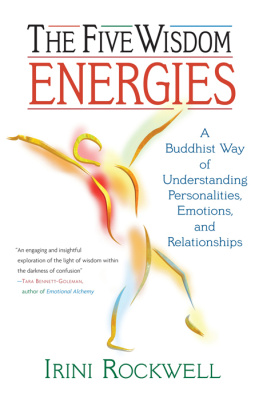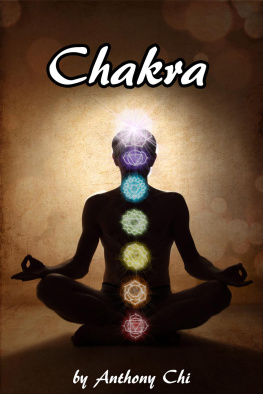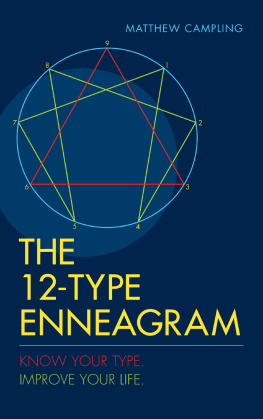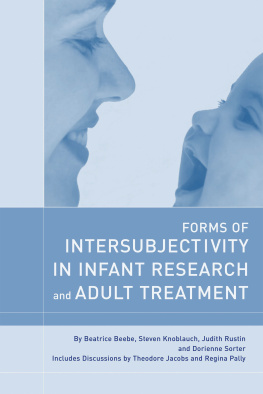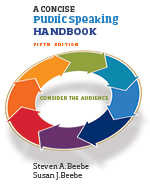ENERGIES AND PATTERNS IN
PSYCHOLOGICAL TYPE
This book encapsulates John Beebes influential work on the analytical psychology of consciousness. Building on C. G. Jungs theory of psychological types and on subsequent clarifications by Marie-Louise von Franz and Isabel Briggs Myers, Beebe demonstrates the bond between the eight types of consciousness Jung named and the archetypal complexes that impart energy and purpose to our emotions, fantasies, and dreams. For this collection, Beebe has revised and updated his most influential and significant previously published papers and has introduced, in a brand new chapter, a surprising theory of type and culture.
Beebes model enables readers to take what they already know about psychological types and apply it to depth psychology. The insights contained in the fifteen chapters of this book will be especially valuable for Jungian psychotherapists, post-Jungian academics and scholars, psychological type practitioners, and type enthusiasts.
John Beebe is a Jungian analyst in private practice in San Francisco. A former president of the C. G. Jung Institute of San Francisco, he is a prolific author and editor and has spoken on analytical psychology all over the world.
ENERGIES AND
PATTERNS IN
PSYCHOLOGICAL TYPE
The reservoir of consciousness
John Beebe
First published 2017
by Routledge
2 Park Square, Milton Park, Abingdon, Oxon OX14 4RN
and by Routledge
711 Third Avenue, New York, NY 10017
Routledge is an imprint of the Taylor & Francis Group, an informa business
2017 John Beebe
The right of John Beebe to be identified as author of this work has been asserted by him in accordance with sections 77 and 78 of the Copyright, Designs and Patents Act 1988.
All rights reserved. No part of this book may be reprinted or reproduced or utilised in any form or by any electronic, mechanical, or other means, now known or hereafter invented, including photocopying and recording, or in any information storage or retrieval system, without permission in writing from the publishers.
Trademark notice : Product or corporate names may be trademarks or registered trademarks, and are used only for identification and explanation without intent to infringe.
British Library Cataloguing in Publication Data
A catalogue record for this book is available from the British Library
Library of Congress Cataloging in Publication Data
Names: Beebe, John, author.
Title: Energies and patterns in psychological type : the reservoir of consciousness / John Beebe.
Description: Abingdon, Oxon ; NewY ork, NY : Routledge, 2016. | Includes index.
Identifiers: LCCN 2015050382| ISBN 9781138918610 (hardback) | ISBN 9781138922280 (pbk.) | ISBN 9781315685946 (ebook)
Subjects: LCSH: Typology (Psychology) | Consciousness. | Psychoanalysis.
Classification: LCC BF698.3 .B435 2016 | DDC 155.2/644dc23
LC record available at http://lccn.loc.gov/2015050382
ISBN: 978-1-138-91861-0 (hbk)
ISBN: 978-1-138-92228-0 (pbk)
ISBN: 978-1-315-68594-6 (ebk)
Typeset in Bembo
by Swales & Willis Ltd, Exeter, Devon, UK
For Adam Frey
CONTENTS
Figures
Tables
The psychologically minded analyst, therapist, or counselor soon discovers an interesting paradox: although peoples unconscious habits are readily visible, the consciousness of others remains strangely opaque. As my colleague Donald Kalsched has observed in The Inner World of Trauma , The self-same powers that seem so set on undermining our efforts are the very reservoir from which new life, fuller integration, and true enlightenment derive (p. 62 ). To believe that the psyche contains the seeds of its own healing is quintessentially Jungian.
This book brings together many strands of analytical, archetypal, and self psychology, including the complex theory over which Freud and Jung sparred; the archetypal psychology that James Hillman developed from Jungs later work; Kohuts image of a depth psychology centered in a little-s self continually affected by the empathy, integrity, and the personal struggles of others; the defenses of the self as inspected by Michael Fordham; and the Jungian ego-Self axis as conceptualized by Neumann and Edinger. But it is the type theory that Jung brought to maturity in 1921 that I have drawn upon most to answer for myself which self-experiences these teachers are actually talking about.
What is new here is the degree to which our typology both creates and helps us to discover the self and its defenses in a personal way. It is thus a contribution to the understanding of the person in the psyche. That person is urged into being by archetypes, including the transpersonal Self that seems to drive human individuation; but the little-s self we experience as persons has its own forms of consciousness, nested in the care of archetypes but capable of asserting and integrating themselves independently. I say this lest anyone reading what I have written about the archetypes in this book take the eight-function, eight-archetype model as an unaltering image of inevitable rigidity. Rather, it is the psyches many dynamic parts that give it the flexibility, over time, to articulate the Self in a personal way that our adaptation to our typology makes us capable of displaying. The reader is therefore advised to approach the book with this developmental perspective in mind. It may not be amiss, as I celebrate in these pages a full fifty years of reflecting on Jungian typology, to admit what by now must be obvious: that my own perspective on the subject is continuing to develop.
John Beebe
San Francisco, October 2015
Most of the ideas presented in this book first found expression in my teaching and lectures. Im grateful to all who have given me the opportunity to learn by inviting me to present. Particularly seminal opportunities to teach about type came from: the C. G. Jung Institute of San Francisco, especially through Barbara McClintock and Steve Zemmelman; Murray Stein and Nathan Schwartz-Salant, organizers of the Ghost Ranch Conferences; Lore Zeller for the Bruno Klopfer Workshop; Marla Herbig and David Hufford for the Seattle Jungians; the C. G. Jung Institute of Chicago; the Association for Psychological Type International and its chapters in Sacramento and the San Francisco Bay Area (especially through Richard Hendrickson) and Vermont (through Suzanne and Nord Brue); Bob McAlpine of Type Resources; Shen Heyong and Shen Gaolan in Macau and Guangzhou; and Beverley Zabriskie for the Jungian Psychoanalytic Association in New York.
I would like to acknowledge my early teachers in type, Jungian analysts Jo and Jane Wheelwright, John Perry, Elizabeth Osterman, Joseph Henderson, Donald Sandner, Wayne Detloff, and Mel Kettner, and friends who have encouraged my study of type in relation to analytical psychology, including Thomas Kirsch, Jess Groesbeck, David Rosen, Andrew Samuels, Hester Solomon, and Martin Stone. Murray Stein kept the spirit of this book alive through its very long germination; Jan Stein and Lynda Schmidt helped me to explore some of its psychology. Im grateful for the support of Sonu Shamdasani, Ernst Falzeder, Meredith Sabini, Angelo Spoto, Katharine Myers, John Giannini, Dick Thompson, Vicky Jo Varner and Susan Nash. Im also appreciative of the universities that have given me opportunities to teach about type, including Stanford, Sonoma State University, Pacifica Graduate Institute, Saybrook University, Fudan University, South China Normal University, and City University of Macau.




